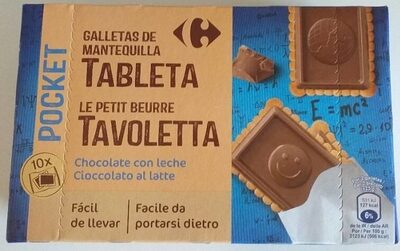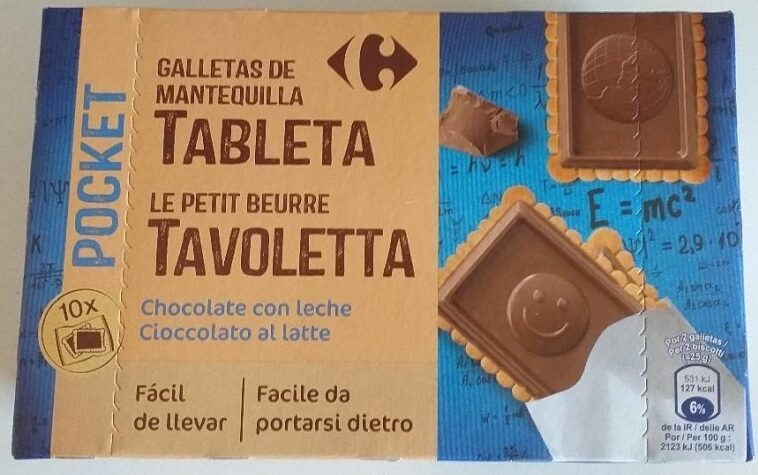PARA LLEVAR GALLETAS DE MANTEQUILLA TABLETA Chocolate con leche - Carrefour - 250 g
This product page is not complete. You can help to complete it by editing it and adding more data from the photos we have, or by taking more photos using the app for Android or iPhone/iPad. Thank you!
×
Some of the data for this product has been provided directly by the manufacturer Carrefour.
Código de barras: 3560070950379 (EAN / EAN-13)
Common name: Galletas de mantequilla con tableta de chocolate con leche.
Cantidade: 250 g
Marcas: Carrefour
Categorías: en:Snacks, en:Sweet snacks, en:Biscuits and cakes, Galleta, en:Chocolate biscuits, en:Milk chocolate biscuits, en:Biscuit with a chocolate bar covering, en:Biscuit with a milk chocolate bar covering
Producer: Fabricado en Francia por / Prodotto in Francia da BISCUITS BOUVARD EMB 33318A para / per Interdis
Traceability code: EMB 33318A - Pessac (Gironde, France)
Tendas: Carrefour
Matching with your preferences
Health
Ingredientes
Food processing
Aditivos
Análise dos ingredientes
Nutrición
Medio ambiente
Carbon footprint
Empaquetado
Transportation
Other information
Other information: "1 galleta" + "1 tableta de chocolate con leche" = "1 galleta con tableta" Fácil de llevar
Conservation conditions: Conservar en lugar fresco y seco.
Customer service: Interdis - TSA 91431 - 91343 MASSY Cedex - France
Report a problem
Data sources
Product added on by carrefour
Last edit of product page on by jusdekiwi.
Páxina do produto tamén editada por ecoscore-impact-estimator, fixbot, kiliweb, moon-rabbit, musarana, org-app-elcoco, org-carrefour.






